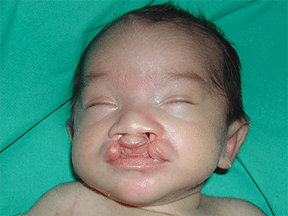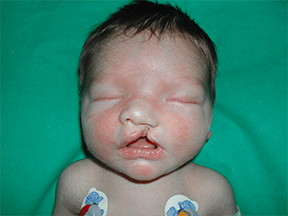Palatal clefts are congenital malformations, that is to say at birth. In the formation of the child’s face, three buds meet and merge under the nose to form the upper lip. This fusion of the facial buds takes place at the end of the first month of pregnancy, around the 36th day. Sometimes the fusion does not take place and the slot remains between the buds, if this defect affects only one side, the slot is unilateral, if it affects both sides, the slot is bilateral.
For the palate, two blades lower, move closer and weld in the middle, around the 40th day. This closure is progressive from front to back to form the uvula at the rear end. A fusion defect between these two blades causes a cleft palate.
The real cause of the lack of fusion between the buds is still not really known. A genetic origin is likely, US teams have identified genes more common in cases of clefts (Nature Genetics, May 2010). But it is demonstrated only in cases of cleft palates associated with other malformations, Van der Woude syndrome for example. Smoking, taking medicine (anti-epileptic) by the mother, can also be responsible for the appearance of a cleft in the baby.

Failure of bilateral closure at the beginning of bilateral bilateral cleft palate fusion

Failure of closure at the beginning of fusion unilateral total cleft palate

closing defect at end of fusion isolated cleft lip

Comments